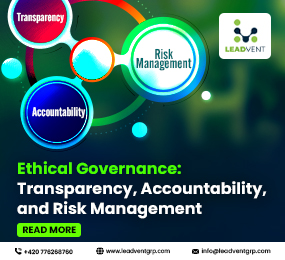Climate change is reshaping all of the world’s economies, societies, and ecosystems. As it increases in intensity, the time to act is also growing shorter, and governments, businesses and communities must do so quickly and carefully. The first prong to effective action (apart from the legal one) is climate change mitigation and adaptation, each mitigating long-term risks and increasing resilience. This can be done with climate risk management understanding and learning.
Understanding the Two Strategies of Mitigation & Adaption
The mitigation aims at dealing with the root cause of climate change – reducing greenhouse gases. It ranges from moving to clean energy, energy efficiency improvements and carbon capture technology investments.
However, adaptation pertains to adjusting to the present and expected climate impacts—such as building flood-resistant infrastructure, climate-smart agriculture, and readiness for heat-resistant urban planning.
This will close out the chance to restrict global warming to 1.5°C without a significant speed-up in emissions reductions. At the same time, adaptation is important as much to where climates are already struggling through extreme weather as it is to the regions that are expected to shoulder significantly more in the future.
Climate Risk Management: Planning for Uncertainty
Climate risk management has become one of the core strategic functions as climate volatility rises. It entails determining the climate threats, whether physical, transitional or liability-related, that the business might face and draughting responses aimed at protecting business continuity.
The CDP report warned Fortune 500 companies that more than $1 trillion of climate value is at risk. Yet those who are including risk assessments in their ESG strategies are in a stronger position to handle disruptions.
Case Study: Singapore’s Coastal Protection Plans
Singapore is spending over $72 billion to protect its coastlines in the long term. It is made up of sea walls and tidal gates, as well as nature-based solutions like mangrove restoration. The city-state’s climate risk management practice provides an example of adaptation as an integral component of national development strategies.
ESG at the Heart of Climate Action
Environmental Social and Governance (ESG) frameworks are contributing towards the reinforcement of sustainability in the ways organisations think about it. ESG drives transparency, ethical leadership, and long-term value creation.
In a recent year, ESG disclosures were reported by almost more than Ninety Percent of S&P 500 companies, a clear indication of the growing consensus on the concept. The ESG frameworks are pushing companies to cut back on emissions, but their main focus is to ensure that companies can develop inclusive and ethical business models.
Innovation: The Driving Force for Sustainability
Technology is a potent facilitator not only of mitigation but also of adaptation. AI-based climate models, satellite monitoring systems, carbon accounting tools, bioengineering solutions, and some mischief-enabling technologies have revolutionised the approach that industries take toward sustainability.
2nd Annual World ESG and Climate Summit: Join the Global Movement
The Leadvent Group presents their 2nd Annual World ESG and Climate Summit to cultivate actions and collaborative exchange at the top level for the climate innovation conference for change and action.
Event Overview
- Dates: 4th-5th June 2025
- Venue: Amsterdam, Netherlands
- Format: Hybrid
- Registration: https://www.leadventgrp.com/event/2nd-annual-world-esg-and-climate-summit/register
Why Attend?
This ground-gilding summit offers the biggest platform where climate leaders, ESG professionals, innovators, and investors come together to share sustainable transitions with their cutting-edge strategies for climate resilience.
Key Event Features
- Case Study Presentations: Learn from real-world examples that offer tactical solutions and practical frameworks.
- Panel Discussions: Exchange Ideas With Global ESG Strategists And Climate Policy Influencers
- Networking Drinks Receptions: Engage With Hundreds of Top-Tier Professionals In Sustainability, Finance, And Innovation.
- Content-Focused Roundtables: Engage In Deeper Exposure Through Thematic Discussions, ESG Metrics, And Circular Economy Models.
- Keynote Insights: Renowned Speakers Addressing Climate and ESG Topics.
- Startup Innovate Showcase: See Into The Future Innovations By The Up-And-Coming Climate Tech Companies.
What You'll Explore
- Climate Finance, Circular Economy, and Biodiversity Preservation
- ESG Reporting, Data, and Strategy Alignment
- EU Regulations: CSRD, ESG Taxonomy, and Disclosure Requirements
- Social Impact and Business Wellbeing
- Integrating ESG with Core Business Models
- The Role of AI and Digital Tools in ESG Data
- Tax and Transfer Pricing Implications for ESG Metrics
Who Should Attend?
- Sustainability Leaders & ESG Officers
- Policymakers & Government Agencies
- Institutional Investors
- Climate Risk Analysts & Legal Advisors
- Tech Innovators & Startups
Be a Part of the Change
As such, the World ESG and Climate Summit goes beyond being a mere Climate Innovation Conference. This is a venue for action. It offers everything from boosting your ESG strategy to assessing your climate risk management. Solutions and collaborations will be discussed on a global scale. The effect requires tools, insights, and networks – sought to have a real impact.
Final Thoughts
If there were one campaign that fueled torchbearers of climate change, this would be it. Mitigation through emission reduction or resilient systems that adapt to changes from a warming planet–every little bit helps. Businesses can create value through Environmental social and governance, thus decreasing risks and protecting the future. Let's operate jointly to shape the world with better climatic conditions.
FAQs
What is mitigation and adaptation in climate change?
Mitigation means addressing the cause and adaptation means dealing with impact.
How does ESG contribute to climate resilience?
ESG makes sure that environmental and social issues are incorporated into the business decisions to protect the companies from becoming victims of such regulatory and physical risks.
Is climate risk management a big corporation's affair?
No. Although many SMEs are gearing up to ensure their operations are future-proof, build trust with investors and prepare for future regulatory requirements.
















